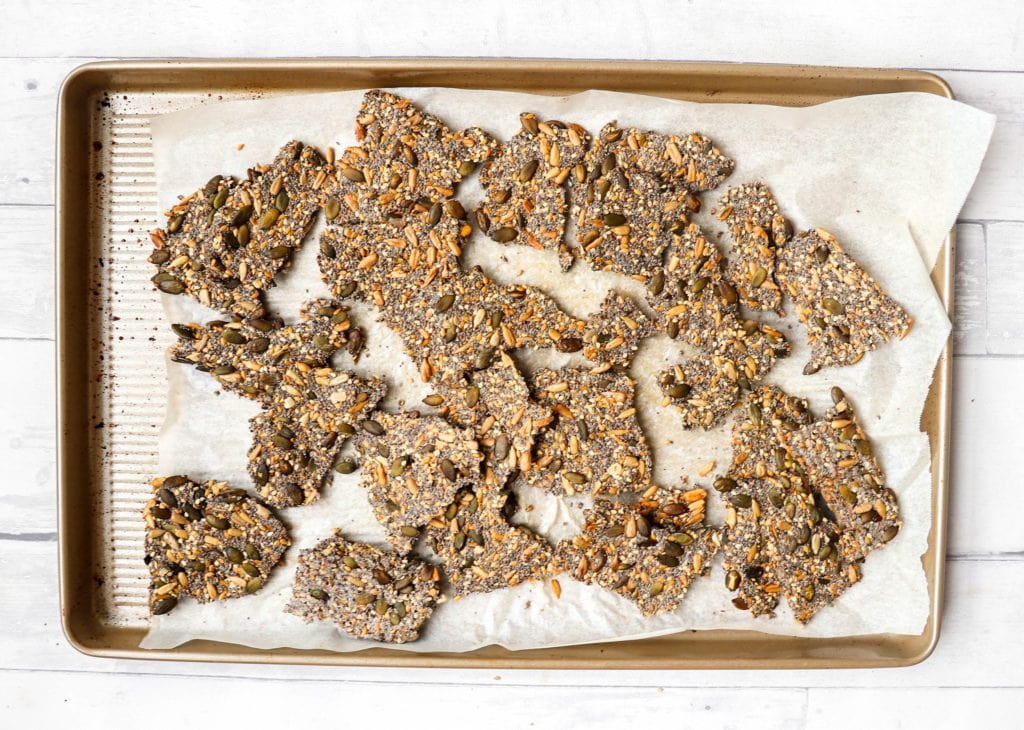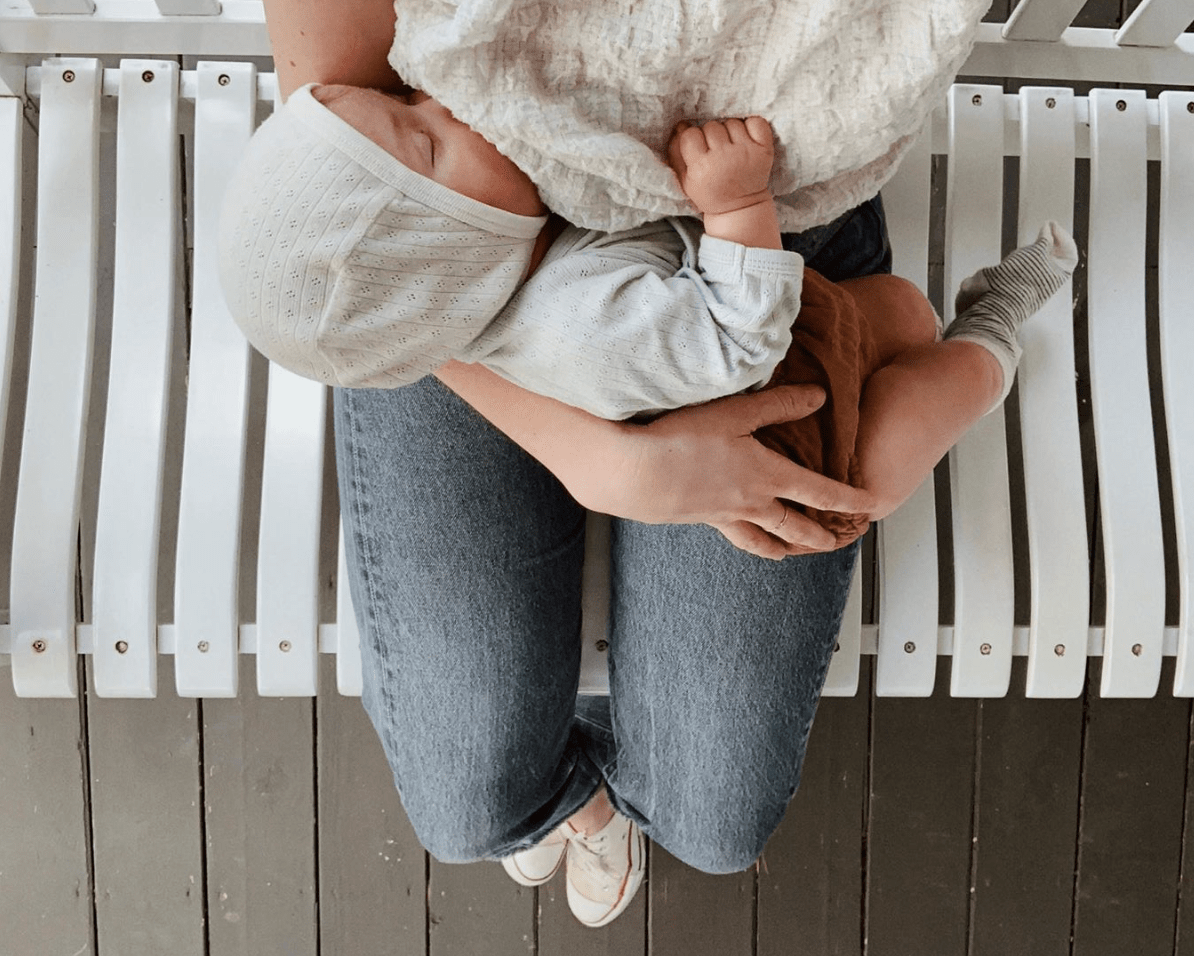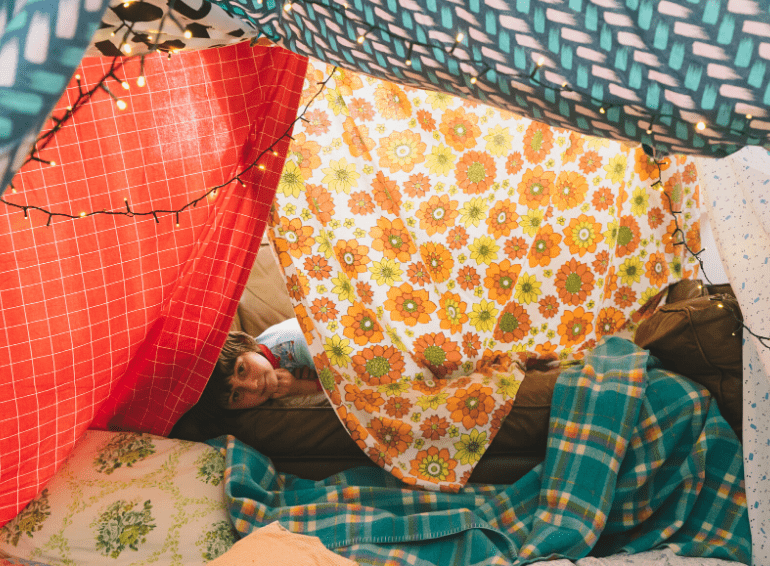
let's build a fort
A favourite past time for little ones to dream and imagine. Our pals at Lunch Lady have shared with us an interesting article on why forts and dens are so beneficial to children's emotional development.
What's with kids + cubbies? by Liz Evans for Lunch Lady
Cubbies and dens provide an opportunity to externalise and re-create what’s going on internally, whether that’s joyful, challenging, confusing, interesting, different or simply unknown.
The experience of entering this space was significant to me, because it was my space, where I made the rules … I chose who could enter, what happened there and, most importantly, whether or not to leave it in a mess!
My kids have always made cubbies. As tiny children, they’d monopolise the furniture—sometimes all of it—shoving together chairs, rugs and cushions to make personalised hideaways free from adult interference. Outside they arranged toys and teacups beneath the shrubs lining the driveway and set up little cafes under the weeping elm tree. As they grew older, they began to rummage through their dad’s landscaping stash, raiding piles of fencing, wire mesh, sandstone and crates for bits and pieces to build more sophisticated forts and dens in the orchard, while at the back of the house, down by the white gum, they made a gunyah from the fallen bark. Once, they even set up residence inside the shell of an old TV set under the oak tree, decorating it with animal skulls for maximum effect.
Dens and cubbies are an ace way for kids to have fun, but there’s more to this than meets the eye. Cubbies have benefits, and children who customise their environment with small, handmade dwellings acquire a whole range of skills, both physical and mental.
“Cubbies engage children on so many levels,” says Tim Gill, an international consultant on children’s play from the UK, and author of rethinkingchildhood.com. “They provide a great springboard for stories, role-play and social interaction, and they offer practical challenges, encouraging children to think about what they can do with the things around them. There are many obvious benefits to building cubbies, including being physically active, problem-solving and working with others. But the more profound benefits are to do with fostering children’s sense of themselves as people who are effective in their everyday actions, and whose actions make a difference. Educators call this ‘self-efficacy’, and it links with resilience, self-confidence and other crucial life skills and dispositions.”
Georgie Ferguson, an early childhood educator and playgroup leader at Tarremah Steiner School in southern Tasmania, agrees. The preschoolers in her care start building cubbies from the age of two or three, and as they progress further up the school, they don’t stop. Some primary classes even build cubbies communally in the bush, as part of their curriculum.
“Creative spaces are an extension of the child and their place in the environment, whether that’s home or school,” says Ferguson. “Cubbies and dens provide an opportunity to externalise and re-create what’s going on internally, whether that’s joyful, challenging, confusing, interesting, different or simply unknown. When a child has a cubby, they have a safe place in which to process all kinds of complex situations occurring at home or school, and are able to develop their spatial and relational cognition in a timely and individual way. They have their own world from which they can tell their story in a way they choose. Sometimes this can be empowering, and sometimes very revealing.”
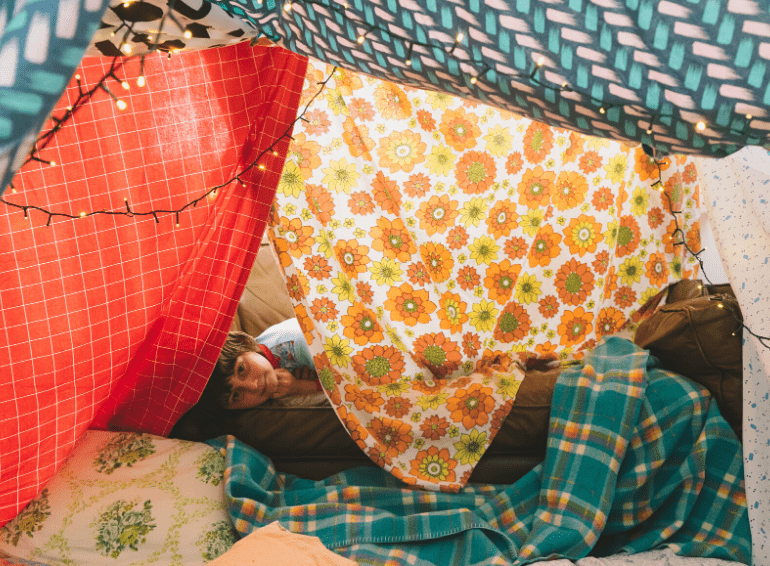

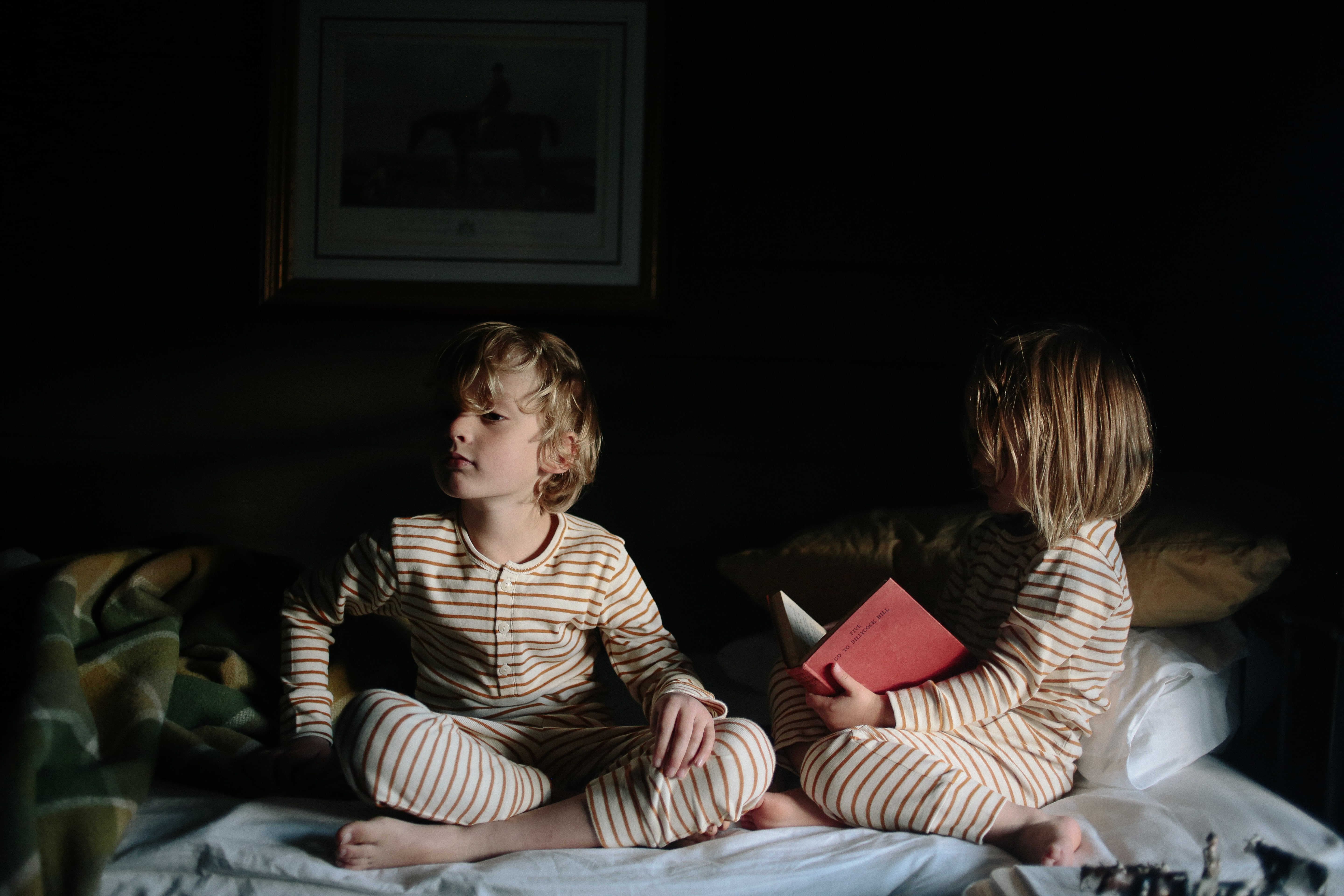

Ferguson recalls one of her first cubbies, built in a macrocarpa pine tree by using a hammer and some nails. Made out of timber, it had an entry door through the floor, a window and three makeshift walls.
“The experience of entering this space was significant to me, because it was my space, where I made the rules,” she says. “I chose who could enter, what happened there and, most importantly, whether or not to leave it in a mess!”
Essentially, cubbies offer the perfect opportunity for self-directed play. Independent, imaginative activity is crucial for healthy childhood development, but in recent years it’s come under threat. According to Antioch University’s David Sobel, author of Children’s Special Places: Exploring the Role of Forts, Dens and Bush Houses, a combination of screen time and increasing parental anxiety over unsupervised recreation has lessened the likelihood of cubby construction, particularly outdoors. Gill and Ferguson appreciate the need for a little parental encouragement and supervision, but both are keen to encourage adults to take a step back from cubby time, emphasising the need for children to explore and establish boundaries for themselves.
“I like the ‘grandmother’s attic’ approach,” says Gill. “Drag out a bunch of suitable stuff—blankets, old furniture, cardboard boxes, kitchen items, buckets, planks—and just let the kids dive in. More kids generally means more fun, so keep it social, and keep it fun. Of course, you’ll want to keep an eye on them, but let the children take the lead and allow time for things to evolve. That’s when really meaningful play experiences happen.”
“Parents can help build,” adds Ferguson. “But then it becomes more about the adult’s vision, and this is a space where children are free of adult attention, so potentially cubbies are very important for a child. It really pays for parents, carers and educators to be silent observers, and not interrupt the imaginary world that the child is entering and creating.”
Time to get the blankets, pillows and chairs out! xx Nb




